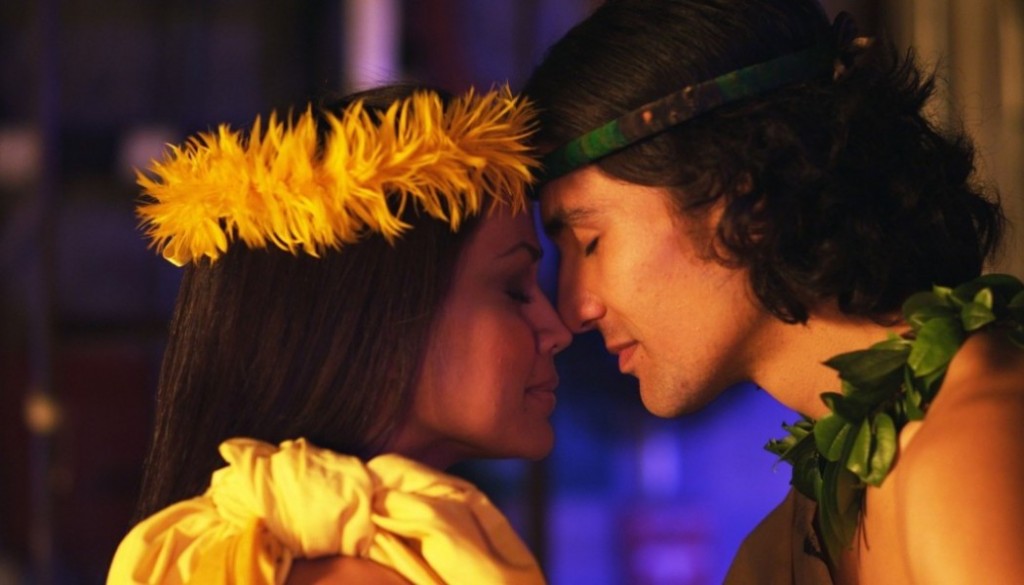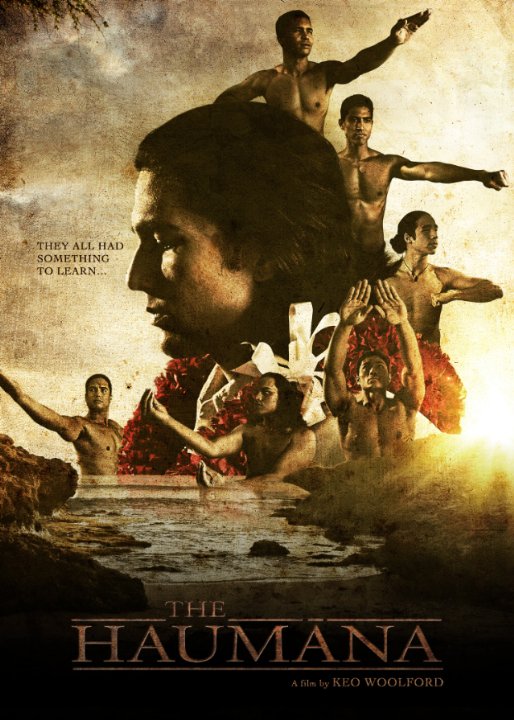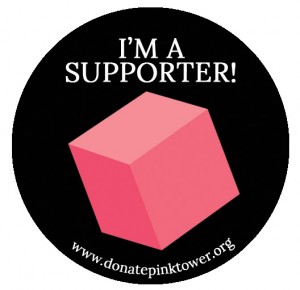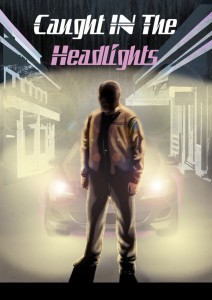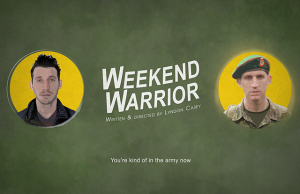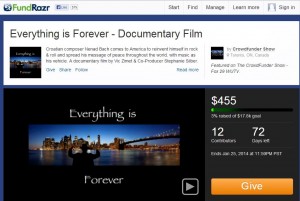
A feature film about male hula dancers enjoys niche success
Written by Keo Woolford, edited by Jeffrey Winter
EDITORS NOTE: Anyone who has read the TFC blog or heard us speak in public knows that strategies for monetizing independent film through audience engagement, focused niche marketing, grassroots outreach and DIY/hybrid release techniques are the tenets of what we teach and preach. Too many filmmakers get lost in the dream that their film should be seen by everyone, so they forget to identify and target (or they willfully ignore) the core demographic for their film.
Every once in a while, however, a film comes along that grows organically from a community, and through careful nurturing by the filmmakers, manages to excite true buzz in its core audience. TFC member film THE HAUMANA, a 2013 film about a high school boy’s hula troupe by filmmaker/actor/hula dancer Keo Woolford, is a perfect model for this kind of niche DIY strategy, born from genuine community spirit.
This month on the blog, we have been advising those headed into the Winter and Spring festivals. If you still haven’t identified the core audience of your film, this post should give you something to think about.
As an actor, I’ve lived and worked in London, New York and Los Angeles. Wherever I go, I take my culture and home with me. I am a proud hula dancer and I would get a little defensive when people would flap their hands at me or ask me, “Where’s your hoop?” It was amazing to me how little people knew about hula and that men even danced hula. This perspective was coming from intelligent and esteemed circles of people, including educators at the University level.
I was blessed to have been commissioned to write and perform a one-man show, directed by Roberta Uno and supported by other sympathetic people and organizations in New York that would expose the struggle of holding on to tradition in post-modern Hawai`i, far from the misconception and misrepresentation of our culture in the global mass media. The show toured for about three years across the United States and also to Manila. Inevitably, audience members would ask if I was going to make a movie about this.
Seed planted.
Cut to a few years later, in between acting gigs, and the conception of the screenplay was born. I originally wrote the lead role for myself. But as time for production crept up, I knew it was my responsibility to oversee the project to keep my vision intact.
The screenplay and film were created for the culture I feel so proud to be a part of; the hula community, both in Hawai`i and outside of Hawai`i. It was also for the local Hawai`i population and the diaspora of Hawaiians and former residents of Hawai`i who still maintain a strong connection to their home and for the people who want to know a little bit more about our culture. It was a goal of mine to show this side of our culture from an insider’s perspective versus someone’s “idea” of what our culture is about. At the same time, I wanted to entertain the audience and not be didactic or documentary about the approach.
I won’t say too much about the budget except that this would be considered a micro-budget feature. I put up most of the money and my best friend helped me raise the bulk of the rest by getting friends to invest for producer points. We did an Indiegogo campaign, which raised a couple of thousand extra. More than anything, though, it was the generosity of the community, crew and cast that kept our budget so low. Everyone worked for reduced or base rates, and the rest of the resources, work, time and talents were enthusiastically “donated.”
This was my first venture in such an undertaking. I have no college or film school degree, and no previous experience in writing, directing or producing such a project. I just had the burning passion to show the world a little more about our culture and assumed the hula and Hawaiian community at home and at large felt the same way about seeing something like that. Therefore, although I didn’t think about it much at first, I always knew that there was a core audience I could draw on, and hoped this film would speak to them.
My initial idea was to get into all the big festivals. Deadlines were coming up quickly and I sent them unfinished versions of the film (which I will never, ever, ever do again, even if they say they accept unfinished submissions). One by one, I was denied. I didn’t mind so much. It drove me to make the film better and gave me that much more time to finish my film the way I wanted. And in the end, I realized I needed every extra minute.
Finally, a programmer named Anderson Le who works for both the Hawaii International Film Festival and Los Angeles Asian-Pacific Film Festival approached me about submitting to these two festivals [editor’s note: Hawaii International (HIFF) and LAAPFF are unquestionably two of the most important showcases for Asian/Asian-American/Pacific Islander film in North America. HIFF also includes many other kinds of cinema as well, but is particularly well known as a “gateway to Asia.” It is important to remember that many “niche” films may find better premieres in specialty festivals than in the large, generic ones.] At that point, I had really become gun shy about submitting an unfinished cut, but ended up giving him the latest version to screen. This time proved to be a charm.
THE HAUMANA was accepted into both festivals and ended up winning the Audience Award at both festivals. It made history at HIFF by being only the second film to ever sell out the 1400-seat Hawaii Theatre (the first was Crouching Tiger, Hidden Dragon) and it was HIFF’s Official Closing Night Film. We also won a Special Jury Prize for Best First Feature from LAAPFF. Since then, it has played in a handful of other film festivals and won another Audience Award at the Philadelphia Asian Film Festival and was nominated for Best Film and Best Ensemble at the Orlando Film Festival.
With the support of these festivals, the word of mouth has spread quickly. From the success we garnered at HIFF, the film was picked up for a run at a small theatrical cinema on O`ahu, where the opening weekend gross was around $10,000. It just completed it’s 9th week at the theater. It is also available On-Demand to all Hawai`i residents
The parent company of the theater in O’ahu (Pearlridge Consolidated) was so enthusiastic about the numbers that they also invited the film to open at a theater they own in New York City, the well-known Village East Cinema. I originally assumed they wanted it for a single screening, but then they told me they wanted it for a one-week limited engagement! And then it was extended for a second week! I don’t have the grosses at the moment, but hope they will give them to me soon.
In addition, the film has also been playing a combination of four-wall screenings and Gathr screenings across the county, selling out the majority of the screenings where the average net is approximately $1500-$2000 per four-wall event.
The strategy has been simple. Hit the core target audience of the film and let the word of mouth carry it even further. Wherever the film has played, the word of mouth has been incredibly strong. The community is passionate about their culture and hungry for work that represents them in a positive and authentic light. I know this, because I am one of them. I have the same passion and hunger for my culture.
Most of the marketing has come from social media. I’m almost embarrassed to say that I didn’t start a Facebook page until about a year after we wrapped principle photography! But once I realized the power of social media, I went all in and I am amazed at how quickly the word spread about the film through Facebook alone. I also have a dear friend, Tracy Larrua, who is my PR person. She has been extremely hardworking and effective in getting the news out about the film into TV and press in various forms. And I had a trailer made as a teaser and then as a 30-second TV spot that played Hawai’i for 5 weeks, which has also been well-received on YouTube.
Through Facebook, I had been getting many inquiries on our page about screenings in a bunch of locations around the world. I did some research on four-walling and once the film made it’s Hawai`i premiere, I wanted to get it out to as many places as I could. The handful of festivals the film was invited to didn’t reach many areas the inquiries were coming from, so I put up a page on our website that allowed anyone who wanted to set up a screening or fundraiser event to contact us to arrange one.
The emails flooded in. Most were from Hālau (hula schools) around the country who wanted to use the film as a fundraiser to raise awareness about hula and our culture. There are several thousand hula schools across the U.S. alone, and these have been an invaluable resource for four-walled community screenings of the film. In general for fundraisers, we split the cost of the theater and then split the revenue from ticket sales. The average costs of the theaters have been about $850. The average net from the screenings has been about $1200. [Editor’s note: on an earlier film TFC worked on, another Hawaii-themed film called PRINCESS KAIULANI, we also used the Halau network for word-of mouth outreach. You can get a taste of what that network looks like at http://www.mele.com/resources/hula.html. It was easily found via Google. It is worth noting that many niche films have some sort of network like this that can be identified, although certainly not always as loyal as this one!]
I was also very fortunate to have a grant from the Ford Foundation pay for the flights and accommodations for the screenings when my travel wasn’t paid. Now we are signed with Gathr, a Theatrical On-Demand company that arranges screenings anywhere in the country. I still do the fundraiser model for the groups that still want to do those.
As of this writing, I plan to continue to do Gathr and fundraiser/four-wall screenings across the country and then pursue a similar model in Japan and Mexico where the hula communities are even larger than in the United States. I have been getting requests on our website and Facebook page from around the world about the film and hope to reach them somehow as well. A DVD release is planned sometime in the middle of 2014 for the States, after we get the word out a little bit more through the screenings and grassroots tour. There are a couple of other festivals that the film will play in as well.
In the beginning, I was just hoping the film would get into a couple of festivals. And now I am traveling to so many places and seeing how people are affected by the film. It has turned out to be so much more than I had expected in so many ways. I am continually humbled and overwhelmed by the response of the film and am so grateful for every experience it has brought me.
EDITOR’S POSTSCRIPT: We posted this blog not to try and trick anyone into thinking that ALL indie films can find niche success in this manner – of course not all films lend themselves to this kind of passionate niche marketing. But rather THE HAUMANA serves as a mirror that all films should at least take a long look into, asking yourself the all-important question….who is the audience for my film?
Jeffrey Winter December 30th, 2013
Posted In: Distribution, Film Festivals, Marketing
Tags: Gathr, grassroots outreach, Halau, Hawai'i, Hawaii International Film Festival, hula, indiegogo, Jeffrey Winter, Keo Woolford, Los Angeles Asian-Pacific Film Festival, niche audience, The Film Collaborative, The Haumana, word of mouth
3 lessons in crowdfunding the UK short film Patient 39
A guest post from Lizzie Crouch. Back in December 2012, Writer/Director Dan Clifton sat down with producer Roland Holmes and co-producer Lizzie Crouch to talk about how they might approach a crowdfunding campaign for Dan’s short film, Patient 39. In this article, Lizzie explores the lessons learned from their ultimately successful campaign, raising over $8000 for the film on Indiegogo. Also included are excerpts from the diary Dan kept while fundraising.
Lesson #1 It’s not just about the campaign; it’s about the community
From Dan’s diary:
The first thing is to discuss what to do with the short fundraising appeal film I’ve made… My appeal is under 2 mins and involves me dressing in pyjamas and making a slight fool of myself (a good thing, apparently), although hopefully the tone is appropriately sincere. Thankfully my producers like it.
There’s lot of great advice online about how to build a good crowd funding campaign. Don’t underestimate how long it takes to do thorough research, but don’t be overwhelmed by it either. There is no set way of doing the perfect crowd-funding campaign, each one is unique, so the real trick is working out what’s right for you.
The most important thing is to figure out the target audience for your campaign. For the Patient 39 Indiegogo campaign we identified a number of audiences who might be interested in supporting us, but given the film’s scientific themes, it was a group we called ‘science-y culture-vultures’ – those interested in the crossover between science and art – that we thought had most untapped potential.
Despite this, we knew that other groups would play a part and ultimately become the film’s audience, so we were careful to include a broad range of content about the film to build a larger online community. The content at the heart of the campaign was aimed at short film fans and science culture-vultures, but careful curation of online content allowed a diverse range of audiences to engage with us.
Lesson #2 Building an online community is committing to a long-term relationship
From Dan’s diary:
The evidence from successful campaigns suggests that what people value above all is not material goodies, but a chance to feel involved as part of the team. After much debate we came up with a list of perks that range from Exec Producer credits at the top of the range, to visits to the set and crew T shirts for more modest-level investors.
As Dan identified in his diary, building a community is about making people feel like they are a part of something – and different audiences will respond to different things. Those who want to donate to the campaign may like thoughtful perks while others may simply want to engage with diverse, inspiring content related to the film or to filmmaking.
In recognition of this we set up a website and social media channels to disseminate articles, carefully balancing new content with our call for donations. Spanning science articles on consciousness and the history of medicine, we built our community around themes that would appeal to them; connected with online ‘influencers’ and key contacts; and kept our campaign fresh by updating the video and making announcements about team members that joined us.
But building an online community is like committing to a long-term relationship. Although most people understand who they’re trying to connect with, many don’t realize the amount of work that goes into maintaining it. Never assume a campaign will run itself – sometimes when we weren’t quite as on top of things are we could have been, we saw the consequences.
From Dan’s diary:
What I am learning is that you definitely have to feed the beast. What I mean by that is even though it seems foolish in some ways, like shouting without hearing an echo back, all the content and tweeting etc. does make a difference in reaching potential supporters. I’ve been away for five days on a shoot and consequently not able to be as proactive as I’d have liked, and sure enough we’ve had a noticeable lull in donations.
All this can be hard work, but a well-built community will reward you at every step of the filmmaking process. Don’t assume though that because you’ve finished the film, the community ceases to be – we are still communicating with ours as we build up to an online release in the future!
Lesson #3 Getting to know your community is humbling (and anxiety-inducing)
When you build an online community, you get to know your audience in a whole new way; you learn their names, where they’re from, etc. This is useful not only when it comes to later stages (marketing and distribution), but also for future projects. But it is also a responsibility that you have to carry on your shoulders!
From Dan’s diary:
Four days to go and we have reached our target, a $500 donation late last night lifting us over the line! I feel amazed and humbled by the whole experience. To feel people’s generosity and support in such an immediate way is something I hadn’t expected, but it is wonderful although I feel a great sense of responsibility too. In the last few days we’ve managed to reach out to funders beyond our immediate circle of family and friends, and it’s great to think that our efforts to widen our base of supporter and followers has had some measure of success.
I believe that our campaign was successful to due the hard work of the team to build and maintain an engaged online community, and we are very grateful for the support we received during our campaign.
To find out more about Patient 39 please visit our website, like us on Facebook or follow us on Twitter @Patient39film.
Sheri Candler November 27th, 2013
Posted In: crowdfunding, SHORT FILMS
Tags: crowdfunding, Dan Clifton, fundraising, independent film, indiegogo, Lizzie Crouch, Patient 39, Roland Holmes, short film, The Film Collaborative
From Kickstarter to Indiegogo–a tale of two different campaigns
Today’s guest blogger, Jan Selby, is in the midst of running her second crowdfunding campaign. Taking the lessons she learned from prior fundraising on Kickstarter, she is using Indiegogo this time. Find out why the switch?
Crowdfunding is not for the faint of heart. It requires months of planning, hard work, and follow-up. It’s worth it if you are prepared and motivated. I’ve launched two campaigns for feature-length documentary films and found them to be powerful strategic tools to help build a community and raise money.
Sheri asked me to summarize what I’ve learned through one successful Kickstarter campaign and a second Indiegogo campaign (currently in progress). I’ve tried to pack as much as I could in this post to share what I’ve learned. I’m not an expert, but I hope my experiences will be helpful to you as you embark on your own crowd-funding journey.
My first bit of advice is to create a team who will work with you for 6 months – 3 months before you launch, then during and after your campaign. I’m a detail-oriented planner by nature. If you’re not, find someone who is and make him/her part of your team. It’s important to avoid launching your campaign until you are fully prepared. Do all you can to be ready before you launch because you’ll be incredibly busy during your campaign.
How long should your campaign be? Most campaigns do best in the first and last week. As one friend told me, “The longer your campaign, the longer your time of suffering in the middle!” I like having a week or so to spread the word about the campaign before the 30-day countdown begins. I also plan to use the first few days to work out the kinks that are inevitable, no matter how hard you planned ahead.
Campaign 1: Kickstarter
My first campaign raised $21,112 to complete my first feature documentary, 9 Pieces of Peace (working title). You can check out the campaign home page at the URL www.9piecesfilm.com/fund. Notice this URL is not the one we were assigned by Kickstarter. Create your own URL that is easy to remember and that you can use after your campaign ends. Research how to redirect your new URL to the Kickstarter URL and then you can choose what to do with it after the campaign ends. I’ve kept it directed to our Kickstarter page, but you could also redirect it to a “Donate” page on your film website.
There are three core elements of a crowdfunding campaign home page. Before you launch, you will need:
1. A pitch video/film trailer
Having both a pitch and film trailer is important if you can swing it. It’s great if the production quality can reflect your capabilities and your vision for the film, but don’t obsess over it if it can’t. Be creative and speak from the heart. Mine weren’t as good as the film will be, but they worked. Consider combining them as I ended up doing in my second campaign.
2. Well-designed rewards
Take the time to research what others have done. Carefully calculate the direct and indirect costs to deliver each reward (including the fees you will pay to the platform and the credit card processor), including shipping and your time. Add 3 to 6 months to when you think you can deliver the reward because everything takes longer than you expect. You can’t change the reward description once someone has given at that level, so be sure to add all the details. Leave room to add new levels. Be thoughtful about the language you use and be consistent. For our Kickstarter campaign, we chose to use the words “backer” and “supporter” plus “rewards” and “pledges”. (For my second campaign on Indiegogo, we are using “donors” and “perks,” but it’s a very different film and campaign.)
3. Well-written text.
Write text that tells your story, builds trust, and motivates the reader to want to be part of the community that makes your film happen. Use subheads to break up the text and add images/graphics to make it more interesting. Remember that MANY people have no idea about how crowdfunding works, so write text for an audience that doesn’t understand it. You can change the text of your page during the campaign, but not once it’s over, so be sure you are happy with the way it looks at the end of your campaign.
Once you have your home page content defined, you might think you are ready to launch. Not yet. Here’s a partial list of what I recommend you and your team do before you launch your campaign.
Network Build up your community of followers on all your social media channels (if you don’t have them, get them), build an email list, network with organizations whose members would want your film to be made, and create a media list to use during the campaign. Meet with anyone who might be interested before and during the campaign.
Develop content and plan promotions Develop your page content, design an e-blast/e-newsletter template, design and print postcards, design a flyer that you and others can post, define your social media messaging calendar and graphics/clips/quotes/images (we used Facebook, Twitter, Pinterest, and Google+), create a graphic that tracks your fundraising progress and plan to use it to update your Facebook cover image daily, define your online advertising campaign strategy (we created and analyzed Facebook and Google ads), define thank-you surprises for supporter updates, and define incentives that you’ll use to entice prospective supporters (our Kickstarter page highlights the last one we did at the top of it).
Get lots of sleep.
Once you launch your campaign, your priority will be communication. Kickstarter (and other platforms) are designed for social media users. Yet, to maximize your chances of success, you need to reach beyond these boundaries.
I sent private Facebook messages to hundreds of people and this worked incredibly well. I also sent hundreds of email messages out to friends who don’t use Facebook and had never heard of Kickstarter. Each message briefly explained the campaign, the status of it, and a request to either contribute or spread the word. Our team distributed thousands of postcards that directed people to our Kickstarter page and emphasized the purpose of the film and the “all or nothing” aspect of the campaign to create a sense of urgency (which was real!). I set up coffee/lunch/drink meetings with friends, turning them into evangelists and sending them off with stacks of postcards.
Remember to continually thank your growing list of supporters! Most platforms make it easy to send out updates. Your supporters want to hear from you. They are also your best advocates. They are invested in your campaign in more ways than one. If you can keep them energized, they will continue to share it.
Communication is time consuming, whether it is online, by phone, or in person. Your team can help in many ways. Together, your goal is to expand your reach as far as possible to people who will care about your project. You never know where your money will come from. Sure, there will be low hanging fruit, but I was shocked when my largest contribution came in on THE LAST DAY from someone whom I hadn’t seen for a year, but who had been following the campaign the whole time, unbeknownst to me.
Overall, our Kickstarter 9 Pieces of Peace campaign was a resounding success, but I must admit, it was very stressful. It was hard for me to sleep or relax for the entire 39 days (and 936 hours). I kept thinking: How would I forgive myself if I didn’t reach my goal because I hadn’t worked hard enough? (Yes. Very type A. Can’t help it. Born that way.) Was I happy with the results? Definitely! The moment I saw online that I had reached my goal, I unexpectedly burst out crying. I think it was a combination of the joy of reaching my goal and the relief that it was over. It’s important to be honest with yourself about if you and your team are up to the challenge.
Campaign 2: Indiegogo
When it was time to launch my second crowdfunding campaign for a documentary film about the transformative power of Montessori education, Building the Pink Tower (working title), I wanted to try a different approach. To be perfectly honest, I was still burned out on the stress of an all or nothing Kickstarter campaign a year later and didn’t know if I wanted to take on that level of intensity again. But my co-producer/co-director, Vina Kay, and I chose Indiegogo because we felt it was a better match for our film.
If you conduct more than one crowd funding campaign, you may be able to build upon the community of supporters you establish with each one. For me, there wasn’t much overlap between the two audiences (except for a few family and friends).
It’s important to think about niche audiences for your film and use this information to create a strategy for your campaign. For this crowd funding campaign, we have the opportunity to tap into an existing group of supporters. There is an established Montessori network – people who love it because they have had a direct experience with it either as a student, parent, or teacher. Vina and I spent the last two years learning about and connecting with this Montessori infrastructure in the U.S. and beyond. Our fundraising trailer had been viewed more than 15,000 times on You Tube, and a short video we created that reflected the vision for our film had been viewed more than 50,000 times.
Our current goal of $50,000 is high, but we feel we have the potential to reach it with the support of this passionate Montessori community. We had secured challenge grants of $20,000 as an added incentive to help us reach our goal. Most importantly, although we are optimistic, we want to be able to keep the money raised if we fall short of our goal. For these reasons, we felt Indiegogo was the best platform for this campaign.
In addition to what we did for our Kickstarter campaign, here’s a list of a few more tricks we are trying on this campaign:
-We created fewer “perk” levels and designed them to minimize our expenses; we combined our pitch and trailer into one video; we created a digital image that “donors” could use as their Facebook profile photo; we created photo/quote graphics that are popular reposts on Facebook; and we have paid to “boost” posts on Facebook with strong results.
-In addition, we have created opportunities to have our campaign mentioned in Montessori media, at national conferences, and in school newsletters.
-We are also grateful to be working with a public relations expert who is donating her time to help us explore how we can attract the attention of the local and national media.
One last topic that is important to consider for any crowd funding campaign is whether a donation is tax-deductible. Both of my films have a fiscal sponsor (IFP MN). This allows donations made through the fiscal sponsor to be tax deductible. This means that when a donation is made through Kickstarter or Indiegogo, it isn’t tax-deductible. Many people won’t care about this, but a few do. We have handled this by having a brief mention on our Indiegogo home page with a link to our fiscal sponsor donation page. Donations made through this page do not count toward our Indiegogo goal. I have since learned that there is at least one fiscal sponsor, Fractured Atlas, who has a relationship with two platforms (Indiegogo and RocketHub) that will allow donations to be tax-deductible. It would be worth looking into whether you can gain fiscal sponsorship. [ed. It can take time to qualify, so do this long before you launch a campaign].
Our Building the Pink Tower Indiegogo campaign ends on December 18th. To follow our progress, visit www.donatepinktower.org. If you know anyone who has been touched by Montessori education, please share our campaign with him or her. We are committed to making a film that will change the national education debate. (Thank you!).
I wish you the best of luck in your crowd funding endeavors. I hope sharing what I’ve learned so far will contribute to your future success!
Jan Selby is a multiple regional EMMY© award-winning producer, director, and founder of Quiet Island Films, a full-service video production company with national clients. After 25 years in corporate marketing, Jan followed her heart to become a filmmaker and video producer/director. Follow Building the Pink Tower on Facebook, Twitter and add them to your circle on G+
Sheri Candler November 21st, 2013
Posted In: crowdfunding
Tags: 9 Pieces of Peace, Building the Pink Tower, campaign text, crowdfunding, Facebook, fiscal sponsorship, Google Plus, indiegogo, Jan Selby, Kickstarter, Montessori, network, perks, Pinterest, Pitch video, promotion plan, rewards, Twitter, Vina Kay, YouTube
Crowdfunding for the second time
We continue to look at filmmakers who successfully have run more than one crowdfunding campaign in order to learn how success builds on itself. This guest post from UK based filmmaker Christopher Bevan of YSP Media talks about the importance of setting a reasonable funding goal and communicating regularly with your donors.
As an independent filmmaker, I was very keen at looking into crowdfunding as a viable option to get our next project off the ground. I’d first heard about the idea of doing this at Chris Jones’ Guerilla Filmmaker’s Masterclass back in 2011 and, when the time came in March the following year, I made the decision to press ahead with our first crowdfunding campaign for a short film called Caught in the Headlights. I chose to use IndieGoGo due to the flexible funding option and also because, at the time, dollars were the only currency on there and I wanted it to be open for international backers.
Having watched lots of other crowdfunding pitch videos, it was clear to me this had to be well made and feature interviews with the team talking passionately about our project.
What helped was already having an existing social media base to reach out to with regular content updates. The first campaign was an overwhelming success for us and we raised $2893, or 181% of our target with backers from all around the world. From this campaign I learned a lot and it was an exhausting experience, but well worth it. The effort of continually pushing the campaign through social media can be a trying process and much of the campaign I ran alone, adding to the work involved, but again totally worth it.
The biggest thing I learned from running that campaign was perk fulfillment. I listed perks that, once factored in, cost a lot to create and took up a lot of time to fulfill. Fortunately we raised more than our goal, so this didn’t affect the film’s budget, but when we had American backers qualifying for perks that required additional postage, the numbers didn’t add up.
In the end, we wrote to backers explaining the situation, offering them the option of digital versions of the physical items to cut down costs, and all were happy to accept this to help the film. Yes, we essentially offered more than we could deliver in terms of perks, but on the one or two items where this became an issue, we were honest and upfront about it. Many backers are more concerned about the project, but giving them the information and choice is still very important. The film turned out well and went on to receive several awards and nominations on the festival circuit.
As far as sending updates to the backers through IndieGoGo, this started frequently, but as post-production continued, these updates became more sporadic as fewer events were happening that warranted passing news on to our backers. Once we began the festival journey, we updated our backers each time we were nominated for or screened at a festival. I did find it was easier to direct backers to our social media channels if they chose to follow them as this was far easier to update and more flexible too. The film is now available online and since we are no longer contending for festivals, we have ceased updates on the project and informed backers of this news. They can of course follow us through social networks still.
Our second campaign ended earlier this year for a short film called Love & Other Chairs
Love and Other Chairs IndieGoGo Video from Christopher Bevan on Vimeo.
A similar funding target was set and this time we were fortunate enough to reach 136% of our target. This is where the lessons of the first campaign came through. We created perks that were mainly digital, cost less to produce and were easily manageable, but still valuable. They included a mention in our Twitter feed and Facebook page, thanks in the end credit roll of the film, a thank you credit on imdb, as well as a walk on role, and executive producer credit. We did away with perks that required posting, everything was delivered online.
In terms of communication with backers, we used videos to convey messages on occasion, but again this would happen more frequently depending on what news we had on the film. We did use the IndieGogo update function a lot more during this campaign, releasing concept art and casting details to backers throughout to keep the momentum going.
During the campaign for Caught in the Headlights, we found that our $25 perk was the most popular, and this is where we’d directed most of our rewards. We’d looked at IndieGoGo’s stats to back this up and when creating the Love & Other Chairs campaign, we created an equivalent £20 perk that had similar weighting and once again this proved to be the most sought after perk. So we learnt the second time round about stacking up what people were going for.
We also chose to reach out to the same backers who had contributed to us in our first campaign via a direct email campaign, details of which were available from our fulfillment spreadsheet generated by IndieGoGo after the first campaign. I would estimate nearly half of our backers came back again to follow up their support, some upping their contribution and going for a higher credit on the film this time around. I think most donors want to see a quality product at the end of it. Most perks that short films can offer don’t have huge monetary value, but offering a credit or being a part of a project have the most appeal.
Being honest and passionate about what you are creating is very important as well as sending contributors regular updates to show that you haven’t just used them for the money and ceased communication. I have seen so many campaigns that send one, two or sometimes no updates and don’t talk to the people who have already supported them. I have personally backed 6 or so campaigns now and am always more attracted to filmmakers who interact and keep in touch.
Managing the donors can be tricky, but the spreadsheet function on IndieGoGo helps in that you tick off backers who’s perks have been fulfilled as well as maintaining a list of what you still need to do. It is a challenge to run one campaign, let alone two back to back, but our success encouraged us and the results were worth it.
I think in order to have the best chance at success, you must set a target that is achievable based on having pre-existing material. Had we set out for £2000-3000 and been overly confident the first time around, we may not have hit our target. Yes it is hard work running these campaigns, but the pay off is great in that you have a ready made audience for your films. Know your audience, know your realistic funding target, know your timeframe and try to bring a track record. This is what will give people confidence to support your work.
Christopher Bevan is an award winning filmmaker specialising in directing, producing and writing. He has amassed a wealth of experience over nearly 8 years of filmmaking whilst actively working on over 60 projects. His films have been screened at festivals both at home and abroad. His award winning short film Caught in the Headlights (2012), picked up best picture and the audience award at the Transitions Derby Film Degree Showcase and has been nominated for several other awards. He is in post-production on his latest short Love & Other Chairs (2013) and the pilot episode of sitcom Jobseekers (2013). He runs production company YSP Media based out of Derby, United Kingdom. You may follow him on Twitter @chrisbevan89 @yspmediafilms and on Facebook. Also, on the Facebook page for Love & Other Chairs.
Sheri Candler November 19th, 2013
Posted In: crowdfunding
Tags: Caught in the Headlights, Chris Jones, Christopher Bevans, crowdfunding, donor communication, Guerilla Filmmaker's Masterclass, independent film, indiegogo, Love and Other Chairs, perk fulfillment, pitch videos, YSP Media
Running more than one crowdfunding campaign
This week, our crowdfunding series will focus on filmmakers who found success on their first campaign and have decided to run a second. Today’s guest post is from Toronto-based filmmaker Shasha Nakhai of Compy Films.
My experience with crowd-funding began with the first film I directed, a 20 minute documentary called THE SUGAR BOWL. The film’s bare bones budget was about $10,000, but I only had about $6,000 raised at the time. In order to make the film happen, I knew I had to raise more money. Being a first-time filmmaker, my options were very limited. I heard about IndieGoGo when I came across another film’s campaign and decided to try it out myself. I set a low goal of $3,000 and ran the campaign on my own. I not only met the goal, but exceeded it raising $3,265 and an additional $1,000 outside of the campaign.
This initial campaign was run during a time when there wasn’t yet a wealth of information available on how to run a successful campaign and I found it very challenging and more of an experiment just to see what would happne. I chose IndieGoGo simply because I live in Canada, and at that time Kickstarter required a US bank account.
I think the main reason behind my project’s success was the subject matter, the personal connection I had to the story and the fact that there was a real lack of films coming from the Philippines. I also had a strong pitch video, even though it was very simple. It was a video of me pitching the film at the Pitch Competition, but my passion for the project really shone through.
The Sugar Bowl – Teaser Trailer from Rich Williamson on Vimeo.
The #1 thing I learned from running a crowd-funding campaign was that I had to leave my pride at the door. You can’t be afraid to ask for things, otherwise you won’t get them! Also, framing what you are asking for is so important. The way you talk about your campaign to others makes a huge difference. For instance, using words like “join us,” “support,” “back,” and “pre-buy” instead of “donate” actually makes a psychological difference. It becomes more about an exchange rather than simply begging for money.
It is also important to have a team to work together on a campaign. It is mentally exhausting to take on a campaign by yourself and I was running myself into the ground trying to plan the trip to the Philippines while at the same time running a 24/7 crowd-funding campaign.
I would say the biggest mistake I made during my campaign was not accounting for the fact that the funds being raised were in USD, not CAD, and that there would be additional wire transfer and conversion costs on top of IndieGoGo’s interest. Another flaw was my lack of updates. If I were to run this campaign today, I would set a higher goal, bring on board a team and be more consistent with social media and updates.
Which brings me now to the campaign I am running today.
Right now I’m producing a short comedy called WEEKEND WARRIOR, directed by Lyndon Casey. Before we started the campaign, I identified my biggest assets. We have assembled an experienced team with strong resumes; the director’s last short film [Captain Coulier (space explorer)] premiered at Sundance 2009; and one of our actors, Dillon Casey, has 20,000 followers on Twitter. Taking all of these into consideration, we decided to set a goal of $15,000, which we are still actively fundraising.
One major advantage we have is being able to tap into already existing mailing lists and social media followers from all of our previous films. Each member of the team is building on their already-existing networks as we move along and we will continue to build on and engage our audiences all the way into production, through to distribution. We’re now creating weekly skits or update videos and actively seeking out media coverage and guest blog opportunities such as this one to keep up momentum.
One important thing we were really missing was a graphic designer on the team. Our most popular perk to date is the only one that has a picture. I realized people are probably not going to be interested in purchasing a tote if they have no idea what it looks like. So to remedy this mid-campaign, we paid a graphic designer to create a tote that people would want regardless of whether it was supporting our film or not. That’s one very important thing remember –assess your campaign along the way to evaluate what is and is not working. Change what you can.
Regardless of the fact that I’ve already run one successful crowd-funding campaign, we’re still finding this one challenging. Perhaps it’s timing – it’s Movember, a typhoon just hit the Philippines, and people are saving for Christmas. Or maybe this kind of film just isn’t for everyone. Whatever it is, we’re confident we’ll be able to overcome it if we continue pushing the project out to wider networks. We’ve got an audience out there and we’re going to find them!
Shasha Nakhai is a filmmaker based in Toronto, Canada with Compy Films. Her award-winning short films have screened at festivals worldwide including the Hot Docs, DC Shorts, LA Shorts, Atlanta, and Aljazeera Film Festivals. Most notably, The Sugar Bowl won Best Film and Best Documentary at the Aesthetica Film Festival, the WIFT-T Award at the Toronto Reel Asian International Film Festival, and was nominated for the Aljazeera Film Festival’s Gold Award. The Sugar Bowl and Joe recently aired in the United States and Europe on ShortsTV and will be released on iTunes later this year.
Sheri Candler November 18th, 2013
Posted In: crowdfunding
Tags: Canada, Captain Coulier, Compy Films, crowdfunding, Dillon Casey, funding goal, indiegogo, Lyndon Casey, Shasha Nakhai, The Sugar Bowl, Toronto, Weekend Warrior
Crowdfunding via TV? Yes, and it won’t cost a dime
Today’s guest post is from Emmy winning producer/director Victor Zimet of Home Team Productions who is actively campaigning for finishing funds to complete a new documentary about Croatian/American composer Nenad Bach called Everything is Forever. But did you know campaigns now have a new promotion outlet on a TV show in Buffalo, NY?
It’s taken fifteen years to make our film, EVERYTHING IS FOREVER. But I never expected the crowdfunding process to consume half a year.
For two months, we wrote and re-wrote copy explaining who we were and what the project is about, cutting trailers for the film and a sizzle reel for our company, HOME TEAM PRODUCTIONS, and shooting on camera wrap-arounds for the campaign pitch video.
It’s been an enormous amount of effort, and it was important for us to emerge from the campaign with adequate funds to finish the film. We chose the flex plan of Indiegogo, in which we could keep what we raised even if we didn’t meet our goal.
Two tips from veteran crowdfunders I found useful were put the F-word back in fundraising, that word being fun. This loosened me up enough to stop taking everything so seriously, and sparked a wave of creativity. One example involved shooting a video replete with music, dancing, and a silly party hat, which became the centerpiece of a virtual birthday party and fundraising event posted on Facebook. That stimulated some donations.
The other piece of advice also involved Facebook; the user creates a Facebook Event announcing the campaign on the first day it is launched. Invite all of your friends and ask them to share which we found to be far more effective than just posting an announcement on a timeline.
After thirty hard-fought days of fun (and anxiety, we’re only human!), we raised two thirds of our goal and were at peace with our efforts.
But it wasn’t over yet.
On the eve of the campaign’s conclusion, we were approached by a producer for THE CROWDFUNDER SHOW, which airs on Fox 29 WUTV in Buffalo, NY, inviting us to be a featured segment on the program. Delighted that our ingenuity made an impression, we accepted. THE CROWDFUNDER SHOW is a half hour weekly show that profiles the best, brightest, and most interesting crowdfunding projects looking to make a mark, follow a dream or improve a community.
On December 29th, our campaign will be featured in a four-minute segment packaged in the half-hour show.[ed. To apply for consideration on the show for your project, go HERE].
Having gone through the rigors of a previous campaign, we were able to supply the necessary material to the show quickly and they had our campaign up on the crowdfunding site FundRazr, where they sponsor projects, within 24 hours.
Now, here’s where it gets really interesting. In our original campaign, we offered perks such as downloads of some of our earlier films, including festival favorite RANDOM LUNACY. We also offered exclusive bonus interviews featuring pivotal figures from the films. Another perk provided an opportunity to do a commentary track on the EVERYTHING IS FOREVER DVD.
THE CROWDFUNDER SHOW sponsors projects on the Fundrazr site and they are providing an extra incentive to donors. They reward contributors with sponsored gift cards for the same amount of money they contribute, up to $100. With this crowdfunding model, what you give – you get! Donors receive a gift card that matches their donation, compliments of retailing giants such as Best Buy, Home Depot, Starbucks, The Gap, and more. The result? People can support our campaign and it will not cost them a dime. This model is a win-win. With the holidays coming up, you bet that I myself will be purchasing some gift cards!
It’s a brave new world in fundraising, and if this is the first wave, we’re excited to be part of it. It will be fascinating to see what donations may result from four minutes of TV time.
Victor Zimet is a veteran of the film and television business with over thirty years experience to his credit. Together with partner Stephanie Silber, he founded HOME TEAM PRODUCTIONS, producing and directing award-winning documentary films, television, and not-for-broadcast projects since 1999. For more information or to donate finishing funds for EVERYTHING IS FOREVER, visit their website.
Sheri Candler November 14th, 2013
Posted In: crowdfunding
Tags: Buffalo, crowdfunding, documentary, Everything is Forever, Facebook, Fundrazr, Home Team Productions, independent film, indiegogo, Nenad Bach, Random Lunacy, The Crowd Funder Show, The Film Collaborative, Victor Zimet
TFC Tidbit of the Day 44 Don’t forget the fees and perks
Remember that the platforms you use to crowdfund have fees associated with collection and access to the marketing tools they offer. Kickstarter takes 5% of the money raised and Indiegogo takes 9% (but if you reach your goal by a specified time, they will rebate 5%). On top, there are 3rd party fees such as Amazon payments fee or Paypal fees to receive the money you raised. Then, there are your fulfillment costs associated with the perks you offered (DVD copies, tshirts, etc. & postage for these). Take these into consideration when you are figuring out how much you need to raise so you don’t run short.
Orly Ravid August 19th, 2010
Posted In: crowdfunding
Tags: Amazon, fees, fulfillment, indiegogo, Kickstarter, Paypal, perks
TFC Tidbit of the Day 42 There is a reason it is called a campaign
Ask any filmmaker who has run a successful campaign and he will tell you it was a full time job to get those funds. It is a crusade to exert your goal continuously and strenuously, basically you are bothering and cajoling everyone you know to help get to the goal. You must be committed to doing that to be successful.
Statistically, the shorter the campaign deadline, the faster the funding comes. I know this sounds unlikely, but if you drag out the process beyond 90 days, interest seriously wanes even from those benefitting from the funds. It is just not possible to keep momentum going for a long length of time. Keep it tight and focused.
Remember, Kickstarter’s policy is all or nothing. If you don’t raise your goal amount in the time allotted, you get none of the money pledged. Indiegogo allows you to keep what you raise, but if you raise it in a specified amount of time, there is a rebate on their fees.
Orly Ravid August 17th, 2010
Posted In: crowdfunding
Tags: campaign, crowdfunding, indiegogo, Kickstarter
TFC Tidbit of the Day 4- Considerations for choosing a platform
Some platforms can be accessed via Self Distribution (e.g. Youreeeka or Maxcast) while others can only be accessed via an aggregator (e.g. Netflix, and iTunes, which at the moment is by far the greatest revenue generating platform in the digital distribution space). Some aggregators are better than others and some distributors and aggregators take lower fees than others. Choosing the best platform/portal for your film must be done with care and must also take into account the type of film it is and its overall release plan.
Much of this information can be found within our Digital Distribution Guide, available to our members. For this week, you can gain access to the full Guide by contributing $35 to our IndieGoGo campaign.
Orly Ravid June 30th, 2010
Posted In: Digital Distribution, Distribution Platforms
Tags: Digital Distribution, digital distribution guide, independent film, indiegogo, iTunes, Maxcast, Netflix, self distribution, TFC, The Film Collaborative, Youreeeka
